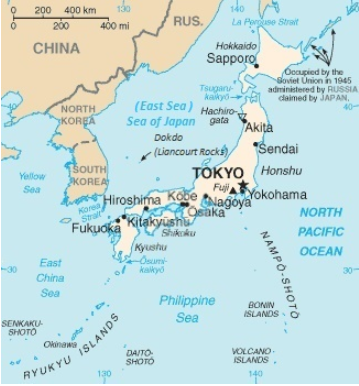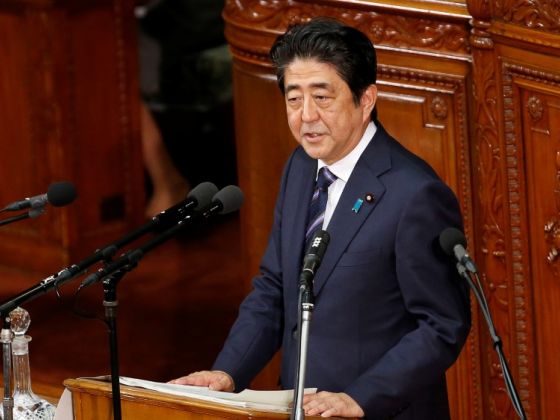As Japan's ruling Liberal Democratic Party (LDP) cruises to thumping victory in the elections to the parliament's upper chamber, the possibility of the country renouncing its 'pacifist constitution' are at an all-time high.
The elections were held two days after the country's most popular political leader, former prime minister Shinzo Abe, was assassinated during a campaign stump speech in the eastern city of Nara.
Following the impressive win in 27 of the 125 seats where elections were held, the ruling LDP-Komeito coalition has 179 seats in the upper chamber of the parliament. In the lower chamber, the combine controls nearly 300 out of the 465 seats.
Big Majority in Both Houses
The clear victory in the upper house elections have given prime minister Fumio Kishida an unprecedented mandate to carry on with the political agenda left unfulfilled by Abe.

The chief among the goals Shinzo Abe could not fulfill was the amendment of the Japanese constitution to drop the military pacifism that governed Japan's post-war geopolitical stance.
Now, with a clear majority in both houses of the parliament and no elections to face in the next three years, Kishida and his allies are expected to push forward the move the amend the constitution.
PM Kishida Drops Hint
"We will deepen parliamentary debate over the Constitution further so a concrete amendment proposal can be compiled," Kishida said after the results came, hinting at the government's agenda.
The assassination of Abe has also helped swing popular support for the policies he had held aloft. Abe's brand of nationalism was seen as a threat in China, and the Chinese did not react kindly to the killing of the most prominent Japanese leader -- a key factor that leads to unify Japanese public opinion on the national security front.

In 2016, Abe pushed through a new law that allowed Japan's Self-Defence Forces (SDF) to participate in armed conflicts overseas. This was the most decisive break from the pacifist principles the country adopted after the end of World War II.
Abe, who vigorously pushed through the legislation, said the law was vital to meet new challenges including a rising China.
It was also under Abe's watch that Japan's parliament approved military operations overseas in 2015, which marked the end of a 70-year 'pacifist' commitment that "the Japanese people forever renounce war and the threat or use of force."
The Article 9 of Japan's post-war constitution stipulates that the country shall not maintain "land, sea, and air forces, as well as other war potential". This is what the nationalists under Abe wanted to change decisively, although several governments in the past have been able to tweak the hard and fast anti-militarist slant of the constitution over the years.
Under Prime Minister Shinzo Abe, Japan has been veering away from the tightly held conventional approach to military upgradation. The defence budget has increased by almost 15 percent in less than a decade. Though the post-war constitution of Japan forbids the possession of offensive weapons, successive Japanese governments have re-assessed the countries security threats and tweaked the self-defence principles from time to time.
Here's a look at the slow and steady evolution of Japanese pacifism over the years.
World War II aftermath
Japan emerged from the World War II with deep scars on its conscience and the country undeniably gravitated to an anti-war stance. The post-war Constitution, which was drawn up when the country was under the US occupation, limited the use of force only as a means of self defence. The crux of Japan's pacifist stance was that the country will refrain from using force to resolve international conflicts. This essentially ruled out military alliances and intervention in regional military conflicts.

1950s and Korean Crisis
The tinkering of Japanese pacifism started in the early 1950s when the US nudged Japan to 're-arm' as it looked to bolster its position during the Cold War.
As the Korean War erupted the US withdrew its forces from Japan, leaving the country with no military to protect itself from any possible invasion. Then, under the behest of the US, a 75,000-strong National Police Reserve was formed in Japan to fill the military vacuum.
Again, the regional balance had significantly changed from 1945 with Chiang Kaishek losing the Chinese civil war. The emergence of Mao and the communists in China meant that America lost another regional ally, and this was at the root of US rethinking on Japan's total pacifism.
Prime Minister Yoshida did not give in to pressure to form a military force for self defence and take on bigger stakes in the region but eventually in 1952 a new National Safety Agency was set up to oversee the NPR.

As per the post-war constitution Japan was never to have a regular army, navy or air force and hence the NPR was seen merely as an extension of the police force. However, the National Safety Agency eventually became the Japan Defence Agency or the Ministry o Defence.
In 1954, the National Police Reserve became the Japan Self-Defense Forces but Yoshida made sure the forces were minimalist.
In the 1970s US President Richard Nixon renewed US pressure on Japan to assume bigger regional role.
In 1983, Prime Minister Yasuhiro Nakasone wanted to make an 'unsinkable aircraft carrier' triggering protests. Also under his rule Japan breached for the first time the de-facto military spending limit of less than 1 percent of GDP.
Nakasone also cut a new path, allowing the export of military hardware to the US.
1990-91 Gulf War
Japan spent $13 billion in the war but with no active military participation, setting off debate over the country's efficacy in strategic interventions, this time the oil supplies. The call for becoming a 'normal nation' gained more traction.
Also a prosperous China's rising defence budget in the 1980s spooked Japan.
Japan initiated a plan to build a ballistic missile defence system (BMD) with US cooperation after the 1998 North Korea missile tests. In 2003 Prime Minister Junichiro Koizumi proclaimed BMD a national priority.
In 2001, in a minor yet symbolic departure from the stance during 1990-91 Gulf War, Koizumi decided to support America's war on terror following the 9/11 al-Qaeda attack, by sending forces to the Indian Ocean.
In 2007, marking the 60th anniversary of the Japanese Constitution, Prime Minister Shinzo Abe called for a "bold review" of the charter that paved the way for Japan's greater role in regional and global security.
Under Shinzo Abe again, in 2014 Japan ended a ban on its armed forces abroad. The ban had been in place since 1945. Ending military seclusion by approving collective self defence meant that Tokyo can extend military support to a friendly country under attack, something which it had been proscribed from doing for decades.









